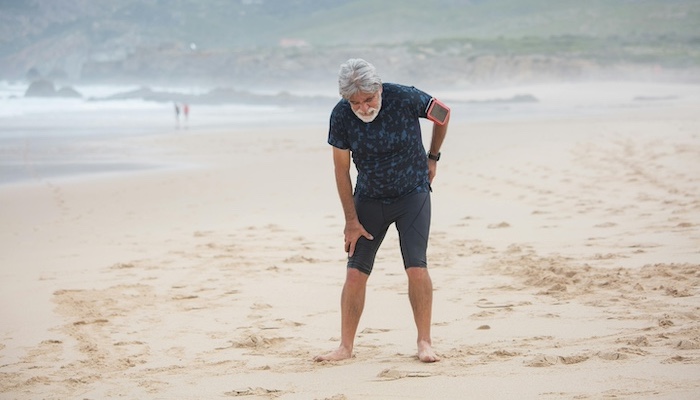
Muscles in the lower back, abdomen, buttocks, and hips are all necessary for supporting and stabilizing the spine. Keeping these muscles active and strong can help avoid low back injury and minimize pain if the spine becomes injured.
A complete back exercise program consists of stretching and strengthening the lower back, abdominal, and lower body muscles, and also includes regular aerobic conditioning. Specific exercises should be prescribed based on individual needs. The program that works best will largely depend on factors such as fitness level, specific back pain diagnosis, and personal preferences.
Low Back Stretching Exercises
Stiff back muscles put added strain on the vertebrae because they limit the spine’s natural movements. Stretching lower back and lower body muscles can alleviate tension, reduce pain, and better support the spine.
A few typical stretching exercises that may be recommended include:
Back muscle stretches
Exercises such as lying on the back and bringing the knees and chin to the chest, pulling slightly on muscles in the neck, shoulders, and torso. Stretching these muscles grants the spine more flexibility and lessens the chance of muscle strain.
Hip and gluteus muscle stretches
These stretches focus on the hip flexor, gluteus muscles, and piriformis muscles. Stretching these muscles minimizes tension in the lower body and maintains a healthy range of motion. For example, the piriformis muscle can be stretched by lying on the back, pulling one knee to the chest and across the body while the other leg is flat. This should produce a slight pulling sensation in the buttock or upper thigh.
Hamstring stretches
Hamstring stretches aim to gradually lengthen the hamstring muscles, lessening strain across the lower back. The hamstring muscles originate in the pelvis and extend down the back of the thighs to the knee. Hamstring stretches can be done in a gentle, supported manner to protect the lower back.
Stretching should not hurt; it is advised to stop if a stretch causes pain. Stretches should be held long enough to feel the muscles loosen up between 20 and 30 seconds and repeated 5 to 10 times. Breathing deeply helps relieve muscle tension and can make stretching easier.
Strengthening Exercises for Low Back Pain
There are many kinds of exercises to develop or improve lower back and core muscle strength. Common recommendations include Pilates, yoga, and tai chi, as well as working with a physical therapist or other health care provider who uses a customized exercise program.
Examples of two strengthening exercise programs that may be recommended include:
- The McKenzie Method focuses on alleviating musculoskeletal pain by gradually altering how the body moves naturally.
- Dynamic Lumbar Stabilization works by finding the “neutral spine” (the natural position of the spine in healthy alignment) and training the back to hold that posture on its own.
Adherence to exercise is one of the main factors for long-term rehabilitation, so it is advised to choose an exercise program that is comfortable and enjoyable enough to do regularly.
Low-Impact Aerobic Exercises
After a back muscle injury, aerobic exercise can be beneficial for recovery and rehabilitation. A healthy blood flow, as facilitated during aerobic exercise, moves oxygen and nutrients through the body to injured muscles, supporting healing in injured tissues.
Low-impact exercise elevates the heart rate without jarring the body, making it a good option for exercising while keeping back pain at a minimum. Examples of low-impact aerobic exercise include:
Exercise walking
Going on a brisk, fast-paced walk can elevate the heart rate without putting excessive pressure on the lower back.
Stationary cycling
Using a stationary bike can improve muscle strength and flexibility in the back, hips, and legs without the impact of riding on uneven terrain outdoors. A standard stationary bike may be preferable, or reclining or recumbent bikes may be used to if more back support is needed.
Elliptical machines
Running on an elliptical machine allows for a workout that mimics running without the impact of the foot hitting the ground. Elliptical machines provide exercise that elevates the heart rate and strengthens muscles in the legs, hips/buttocks, core, and lower back.
Water aerobics, swimming, or water therapy
Exercising in a pool can provide a comfortable workout despite back pain, and one that is a low risk for injury. The buoyancy and resistance of moving through water allow for comfortable movement with little impact on the spine, while also strengthening muscles throughout the body (especially the core and back muscles). Many pools are kept at a warm temperature, which is often soothing for low back muscle strain.
An ideal exercise program raises the heart rate for at least 20 minutes, 3 to 4 times per week, but depending on pain levels this may not be possible. It may be necessary to start with shorter periods of exercise and gradually build up to 20 minutes or more, or to tailor exercise habits to fit one’s needs and abilities.
Precision Pain Care and Rehabilitation has two convenient locations in Richmond Hill – Queens, and New Hyde Park – Long Island. Call the Queens office at (718) 215-1888 or (516) 419-4480 for the Long Island office to arrange an appointment with our Interventional Pain Management Specialists, Dr. Jeffrey Chacko or Dr. Sonny Ahluwalia.













